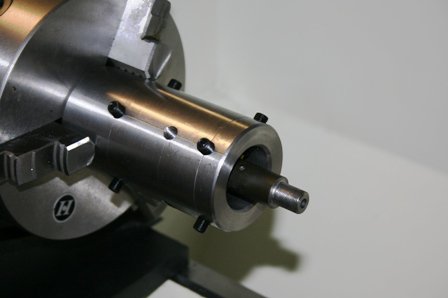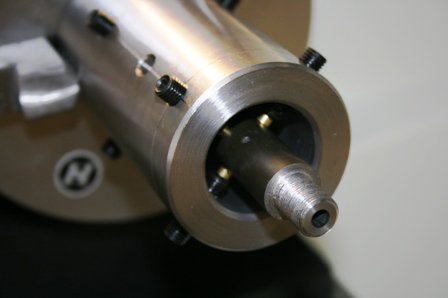Most truing sleeves are made of thick walled tubing or pipe, of course large enough for an action to fit. Two sets of 4, adjusting screws allow the alignment of the action. The sleeve is typically held in a 4 jaw, or a 3 jaw that can grab the OD of the sleeve. The indicating of the OD on the sleeve is really not needed, the work is inside.
A mandrel is inserted into the action which extends out in front enough to use two dial indicators, and you align both front and back of the action to zero, which sets the action on a true centerline all the length of the action, a theoretical extension of the barrel.
You don't need to hog off metal while truing, all you are doing is just enough to get the faces either i the same alignment, or perpendicular to this centerline. Chasing the threads, locking lugs, action face should only be touched enough to true it, no more. Same with the bolt.
Remember, any metal you take off the action lugs or the bolt lugs, reduce primary extraction. Re-setting the bolt handle is the only fix for this.
All this ca be done with a spindle hole that is smaller than the action, all you need is to grab the truing sleeve.



